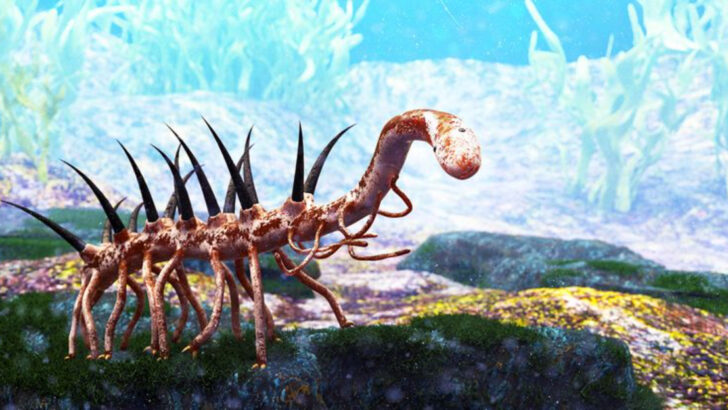Dinosaurs were cool—but some of their neighbors were downright freakish. Before, during, and after the age of T. rex, the planet crawled, swam, and slithered with creatures that looked like science fiction gone wild. We’re talking sharks with buzz-saw jaws. Insects the size of dogs. Reptiles with wingspans wider than small planes. These weren’t background characters—they ruled their corners of the Earth with bizarre power and style. Forget everything you thought you knew about prehistoric life. These 18 strange creatures make even the weirdest dinosaur look basic.
Hallucigenia
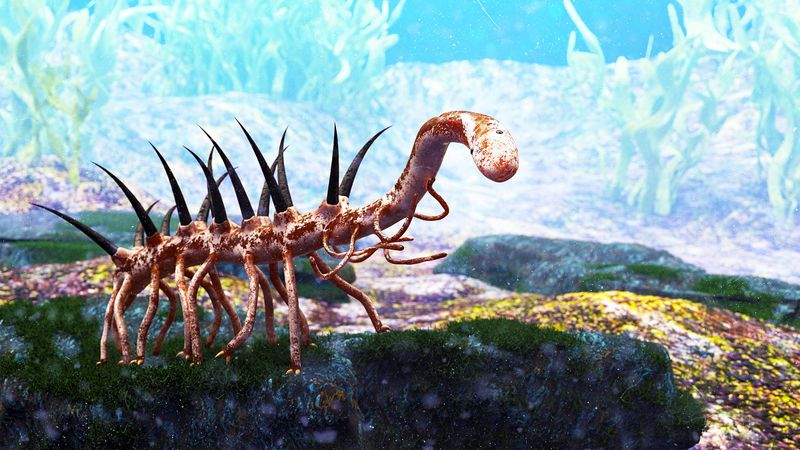
Imagine a living entity that could give nightmares to the bravest souls. Hallucigenia, a minute creature from the Cambrian period, fits this bill. With its spiky appearance and peculiar gait, it challenges our very perception of what a creature should be. Initially, scientists were baffled, even placing it upside down in early reconstructions. Some thought its spines were legs! A true testament to nature’s unpredictability, Hallucigenia redefines what we consider a usual form. What makes it even stranger is its size, too small to be a threat yet intriguing enough to capture attention.
Anomalocaris
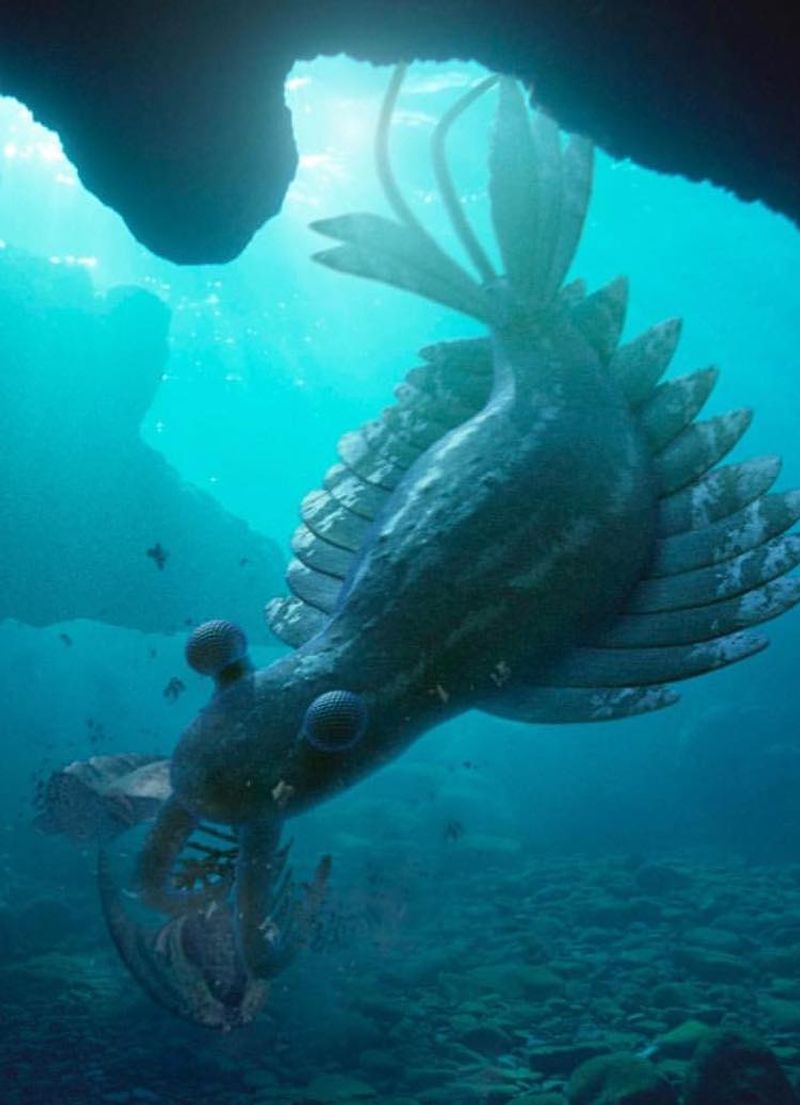
Picture a shrimp on steroids, wandering the ancient seas. Meet Anomalocaris, a predator of the Cambrian waters. Armed with appendages resembling can openers, it snatched its prey with ease. Its mouth, a peculiar circular structure lined with sharp plates, adds to its bizarre allure. Despite its threatening appearance, scientists speculate it fed mainly on soft-bodied organisms. At over a meter long, it was the leviathan of its time, intimidating in both form and function. Such unique adaptations illustrate the diverse evolutionary paths life undertook millions of years ago.
Dunkleosteus
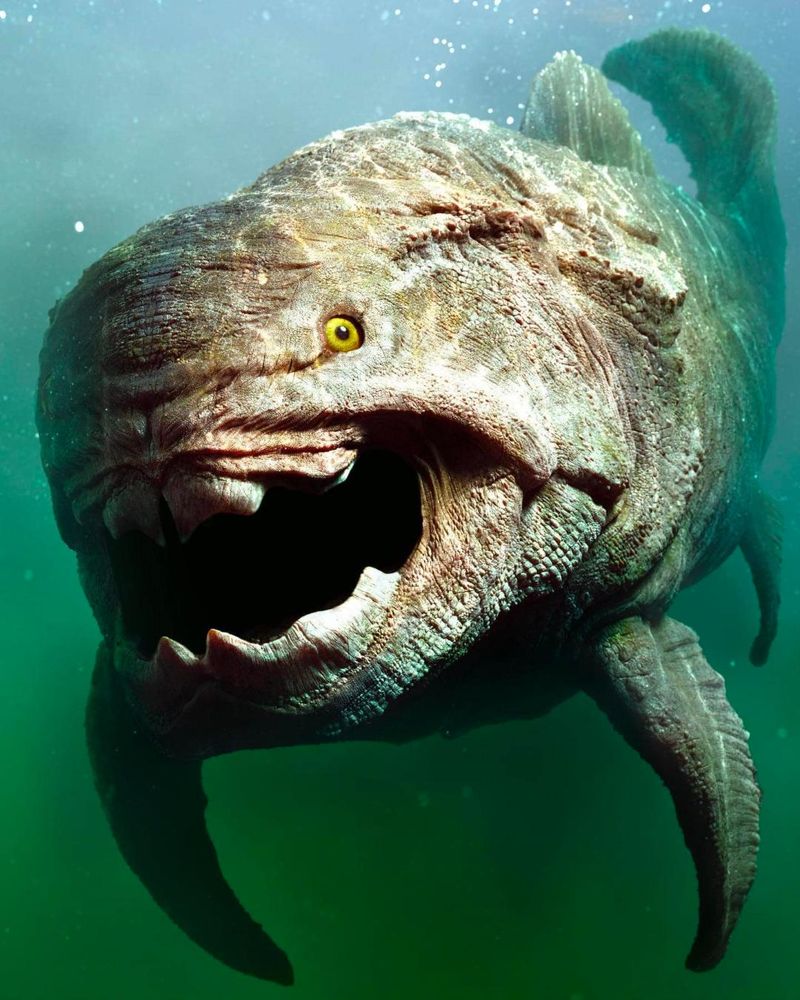
In the depths of the Devonian seas lurked Dunkleosteus, a titan among fish. This prehistoric leviathan, with its heavily armored plating, was unrivaled in its domain. Its jaw, a formidable weapon, could crush anything with a single bite. Unlike the delicate grace of a dolphin or the stealth of a shark, Dunkleosteus embodied brute strength. Yet, despite its fearsome appearance, it played a crucial role in its ecosystem. As a top predator, it maintained balance in the marine food web. A marvel of prehistoric engineering, it commands respect even now.
Opabinia
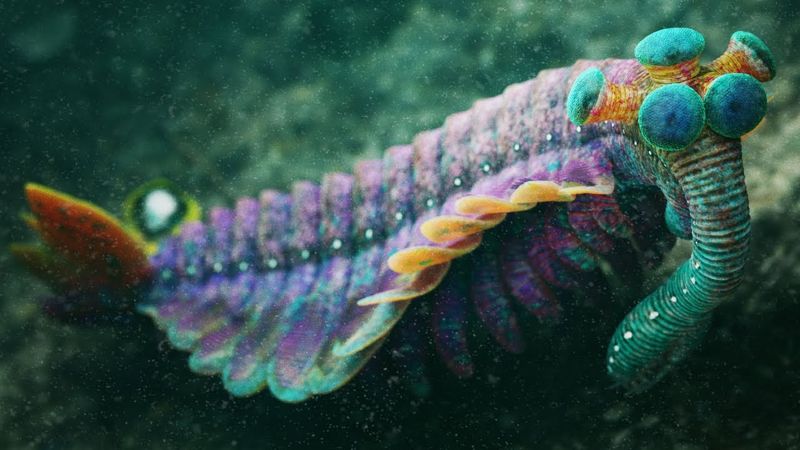
Opabinia, a Cambrian oddity, boasted five eyes atop its head. Its trunk-like proboscis was as strange as its name. Swimming through ancient seas, it defied conventional anatomy. Each eye, perched strategically, provided a panoramic view of its surroundings. This unique visual setup gave it a survival edge. Rather than blending in with its peers, Opabinia stood out, a masterpiece of evolutionary quirks. While some creatures relied on speed or strength, it depended on its unusual adaptations to thrive. A testament to nature’s endless creativity.
Arthropleura
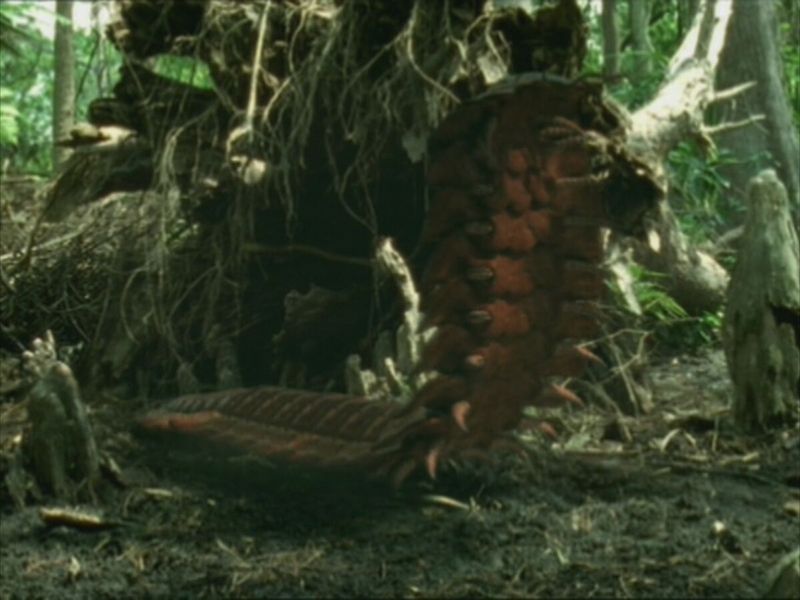
Arthropleura, spanning over two meters, was a giant among arthropods. Imagine a millipede-sized train, traversing the prehistoric forests. Its presence was both awe-inspiring and terrifying. Despite its daunting size, Arthropleura was herbivorous, feeding on the lush vegetation of its era. Forests of towering ferns and colossal trees provided a perfect backdrop for its journeys. Though its immense form might suggest a predator’s lifestyle, its diet tells otherwise. It serves as a reminder of the sheer diversity and unexpected paths evolution can take.
Helicoprion
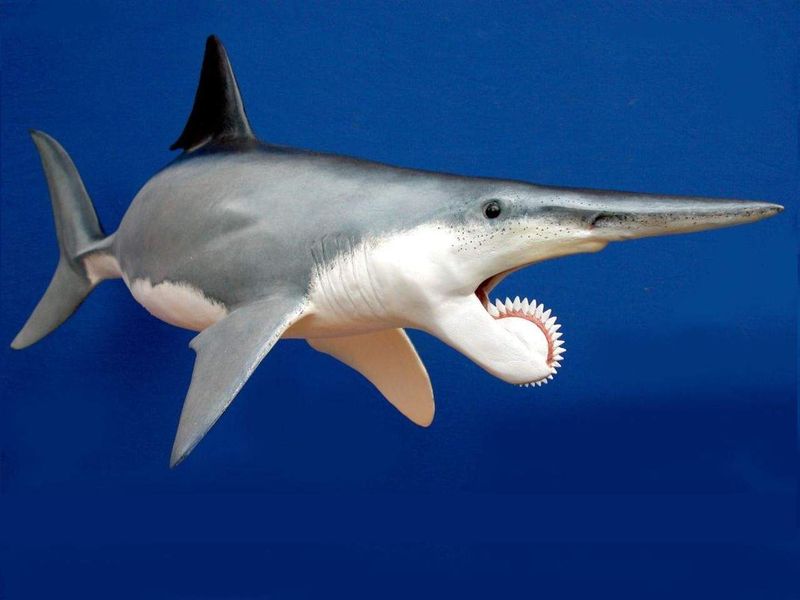
Helicoprion is best remembered for its peculiar whorl of teeth, resembling a buzz saw. This spiral jaw, unlike anything seen today, puzzled paleontologists for decades. Was it an ancient weapon, or merely a feeding adaptation? The truth remains a mystery. Swimming in the Permian seas, it hunted with unparalleled efficiency. While its silhouette mirrored modern sharks, its dental structure was entirely unique. Such adaptations highlight the endless possibilities evolution can explore. Helicoprion’s legacy is one of intrigue and wonder, a symbol of nature’s ability to surprise.
Rhinoceros Beetle
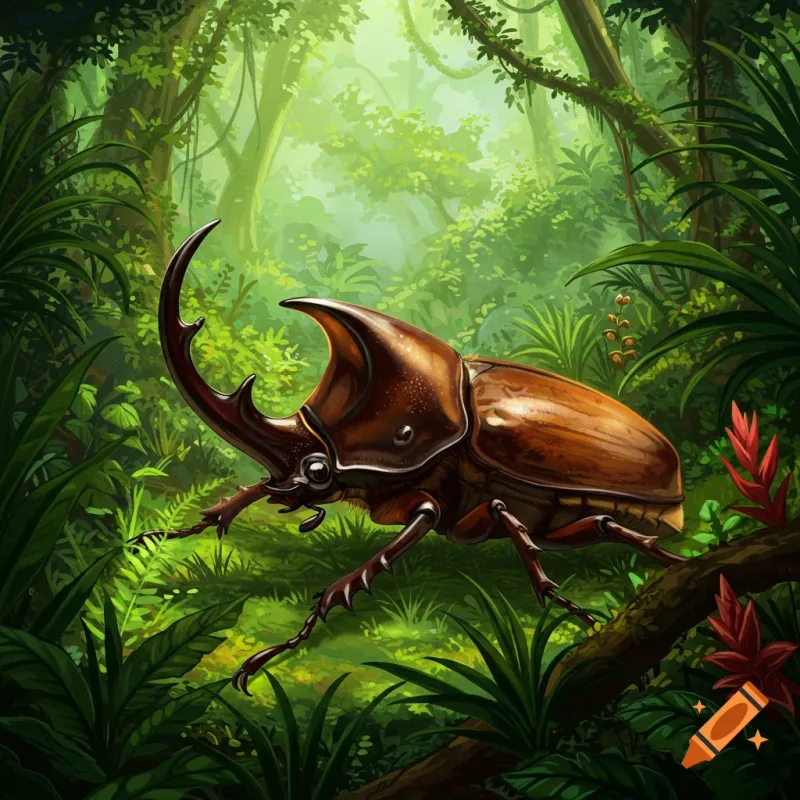
Although familiar now, prehistoric rhinoceros beetles were giants of the insect world. Their single, prominent horn was both a weapon and a tool. These beetles, traversing dense jungles, were the titans among their peers. Though formidable in appearance, their battle was often for mates rather than survival. This gentle giant utilized its horn to overthrow rivals in contests of strength. In these lush, buzzing forests, the rhinoceros beetle was a testament to nature’s blend of beauty and brawn. Its legacy continues, showcasing the delicate balance of power and grace.
Megalodon
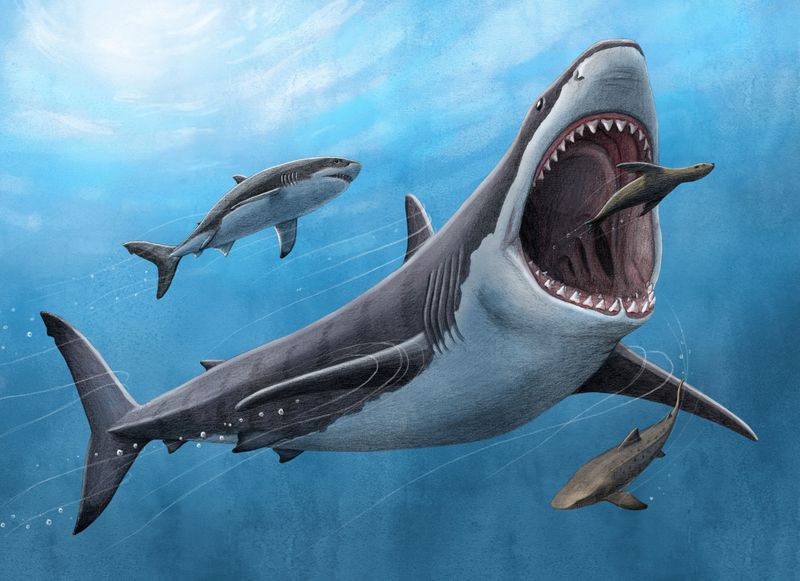
With the power to swallow a human whole, Megalodon was a true terror of the ancient seas. Its size dwarfed even the largest modern sharks. This colossal predator preyed upon whales, exerting dominance with ease. Its massive jaws, filled with razor-sharp teeth, were perfect for its voracious appetite. Yet, Megalodon was more than just a predator; it was an ecological force. Its presence shaped marine communities, maintaining balance and diversity. As an icon of prehistory, it continues to fascinate and terrify, a symbol of nature’s raw power and grandeur.
Therizinosaurus
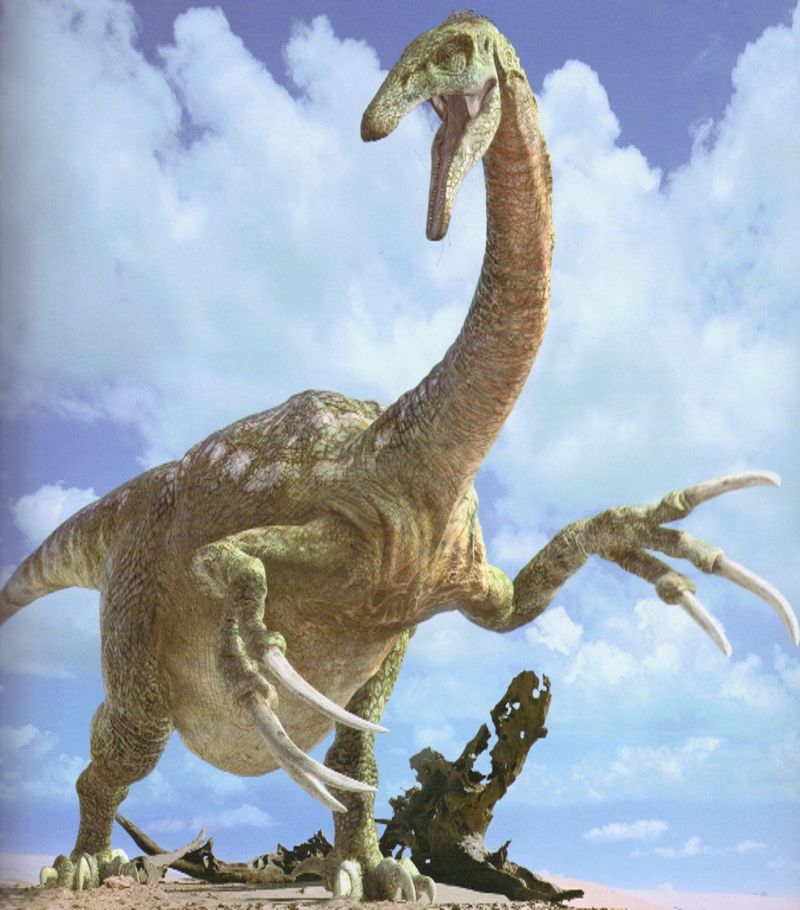
Therizinosaurus, unlike its carnivorous relatives, boasted massive claws. Its hands, adorned with scythe-like appendages, were an evolutionary marvel. Originally thought to be a fierce predator, later studies revealed its herbivorous diet. These claws, once seen as weapons, were tools for foraging. In vast plains of sparse vegetation, Therizinosaurus thrived, its adaptations perfectly suited for its lifestyle. This creature challenges our perceptions, reminding us that appearances can deceive. Beyond its bizarre exterior lies a story of survival and adaptation, a testament to the complexity of life.
Quetzalcoatlus
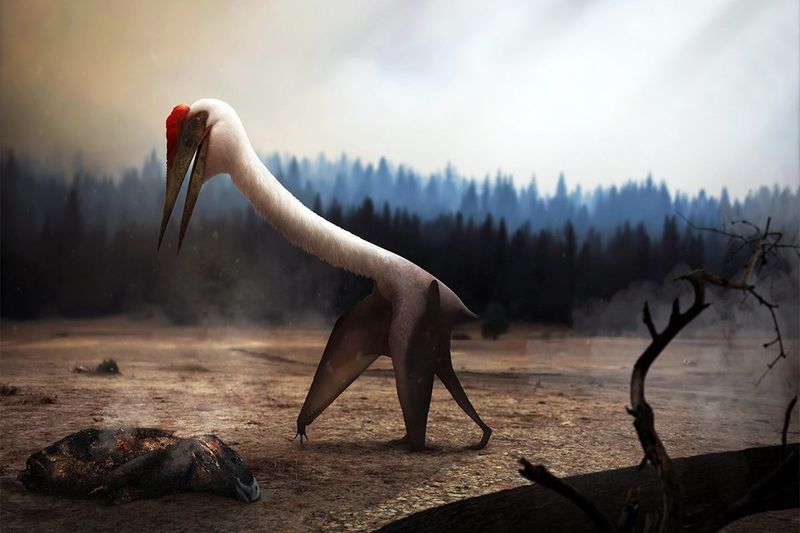
Quetzalcoatlus, named after an Aztec deity, was the largest flying creature to ever grace the skies. Its wingspan, rivaling small aircraft, allowed it to soar over lands with ease. Despite its size, it was an adept flyer, gliding gracefully in search of prey. Its beak, long and sharp, was perfect for snatching fish from waterways. In a world dominated by dinosaurs, Quetzalcoatlus ruled the air, a testament to evolution’s ingenuity. This pterosaur, with its majestic flight, remains an icon of prehistoric wonder, bridging the gap between the heavens and the earth.
Gorgonops
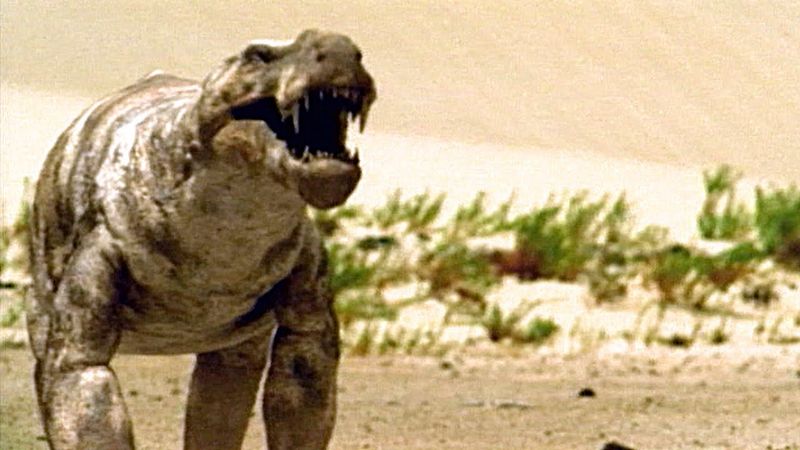
In the Permian period, Gorgonops reigned as a fearsome predator. This mammal-like reptile, with its saber-like teeth, was a precursor to the age of mammals. Its sleek build and powerful jaws allowed it to dominate its environment. Roaming the ancient savannahs, it hunted with a blend of cunning and brute force. Though its time was brief, Gorgonops left an indelible mark on the evolutionary timeline. Its presence illustrates the gradual transition from reptile to mammal, a pivotal moment in Earth’s history. Gorgonops was both a predator and a bridge to the future.
Pterygotus
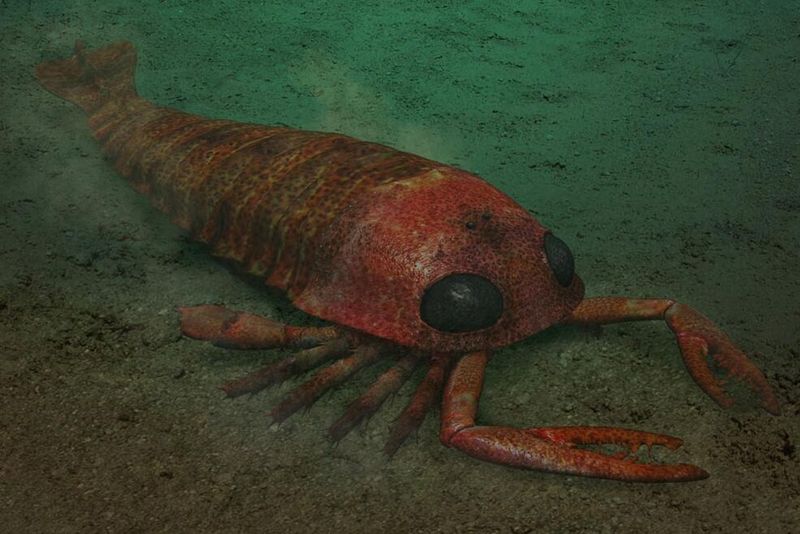
Pterygotus, the giant sea scorpion, was the terror of Silurian seas. With its menacing claws and formidable size, it was the apex predator of its time. Unlike modern scorpions, Pterygotus thrived in aquatic environments, a true master of the seas. Its diet consisted of fish and smaller sea creatures, showcasing its dominance. This creature’s adaptation to water over land highlights evolution’s unpredictable paths. As a relic of a long-forgotten era, Pterygotus invites us to ponder the endless possibilities of prehistoric life and its myriad forms.
Tullimonstrum
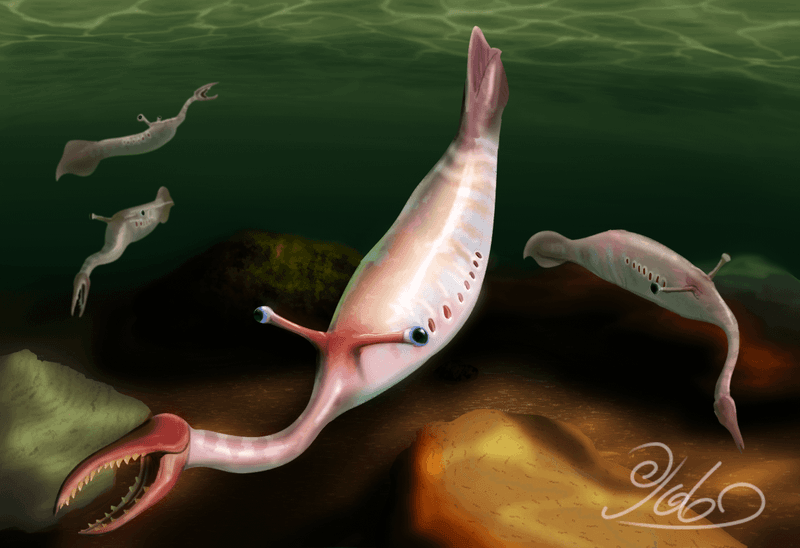
Tullimonstrum, or the “Tully Monster,” remains an enigma to scientists. Discovered in Illinois, this soft-bodied creature defies classification. Its elongated body and peculiar proboscis make it a puzzle wrapped in a mystery. With small eyes perched on stalks, it navigated the murky lagoons of ancient times. Despite extensive research, its exact lineage remains elusive. The Tully Monster challenges our understanding of life’s diversity, prompting questions about evolution’s many branches. As we uncover more about its existence, it remains a testament to nature’s boundless creativity and the mysteries it holds.
Terror Bird
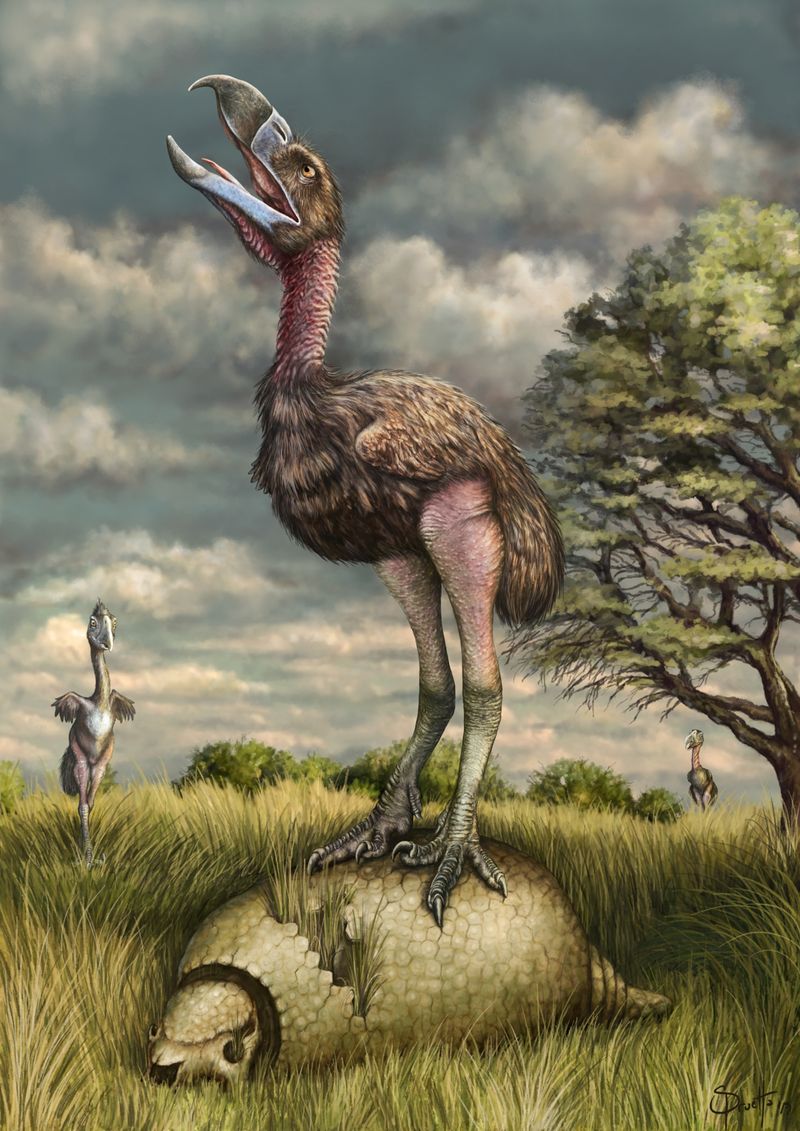
Imagine a bird that could chase down and overpower mammals. Terror birds, with their formidable beaks and towering stature, were the predators of prehistoric grasslands. Standing over three meters tall, they combined speed with power. Their hooked beaks were perfect for delivering lethal blows. Despite their fearsome reputation, these birds were vital to their ecosystem, maintaining the balance of species. They exemplify evolution’s ability to produce both beauty and terror in equal measure. As an apex predator, the terror bird remains a fascinating chapter in the story of Earth’s past.
Eurypterus
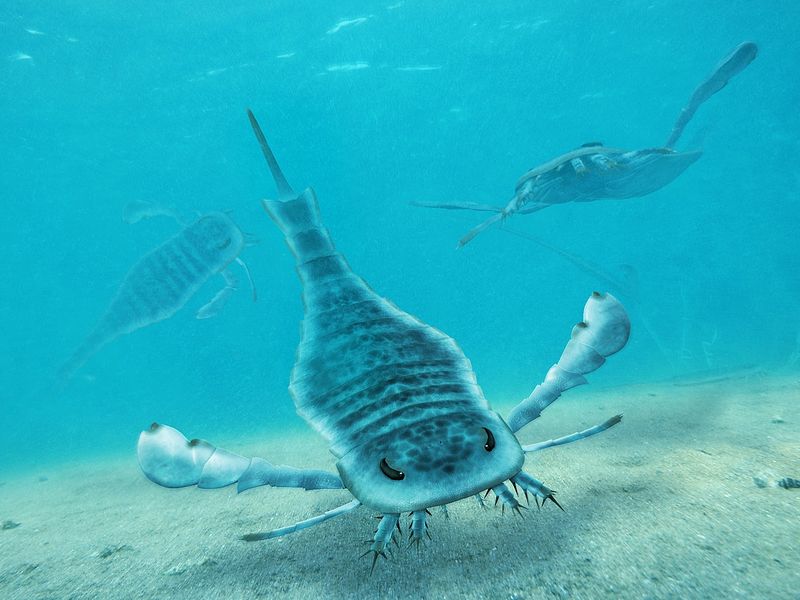
Eurypterus, a cousin of Pterygotus, was smaller in stature but equally fascinating. These agile sea scorpions thrived in Silurian seas, a testament to adaptability. Their bodies, streamlined for swift movement, allowed them to hunt efficiently. Unlike their larger relatives, Eurypterus favored smaller prey, showcasing a varied diet. Their presence in diverse aquatic environments speaks to their evolutionary success. As we study these creatures, they offer insights into the complex web of prehistoric life. Eurypterus stands as a symbol of life’s resilience and the intricate tapestry of evolution.
Platybelodon
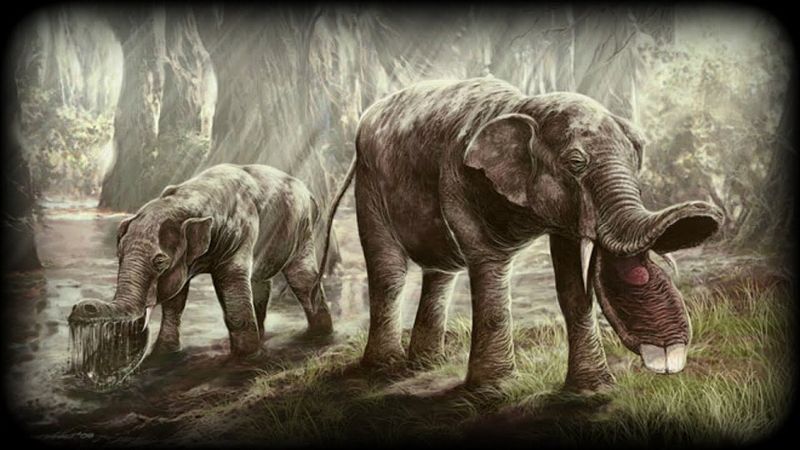
Platybelodon, with its distinctive shovel-shaped jaw, was unlike any modern elephant. This prehistoric creature used its unique mouth to scoop vegetation from swampy terrains. Despite its odd appearance, Platybelodon was a successful grazer, thriving in diverse environments. Its jaw, both a tool and a defining feature, set it apart from its contemporaries. As it wandered the prehistoric landscapes, it played a vital role in shaping its ecosystem. The curious design of Platybelodon serves as a reminder of evolution’s power to innovate and adapt in the face of changing conditions.
Microraptor
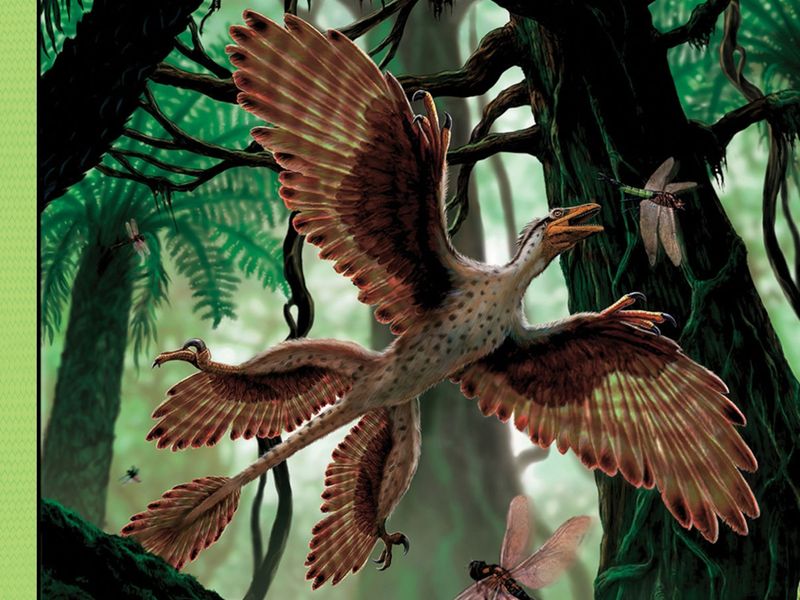
Microraptor, a dinosaur with wings on its arms and legs, epitomizes the link between dinosaurs and birds. This small creature flitted through prehistoric forests, using its feathered limbs to glide gracefully from tree to tree. Its ability to both climb and soar made it a versatile predator. In the lush canopies, Microraptor hunted insects and small vertebrates. Its existence blurs the line between avian and reptilian, offering a glimpse into the evolutionary transition. As a symbol of adaptability and innovation, Microraptor continues to captivate the imagination of scientists and enthusiasts alike.
Longisquama
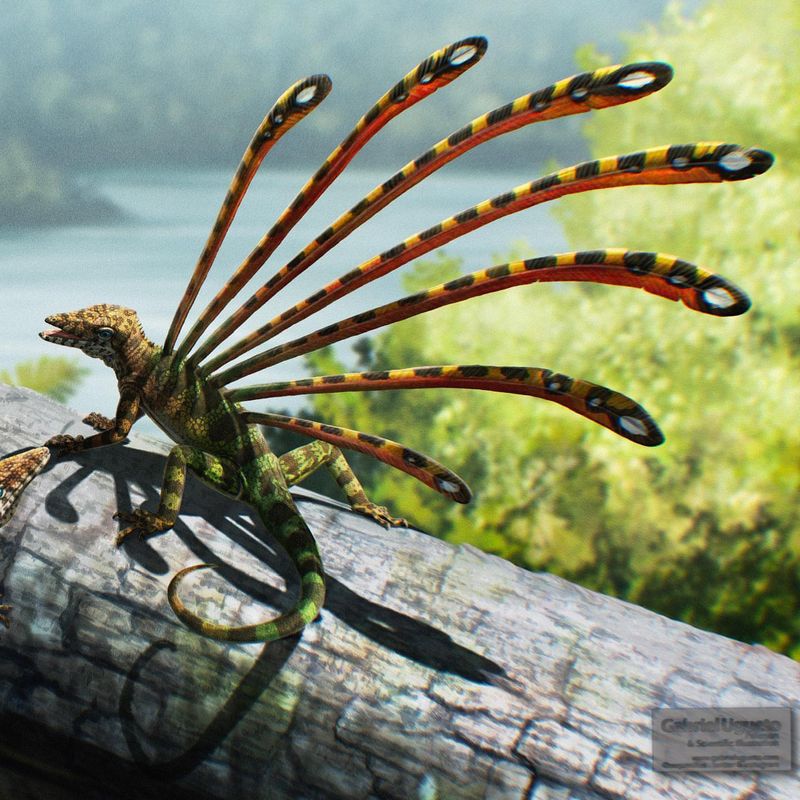
Longisquama insignis was an extraordinary reptile roaming the Earth around 220 million years ago. Imagine a small creature with striking, feather-like appendages sprouting from its back. These unique structures captivated scientists and fueled debates about early bird evolution.
In an era dominated by fearsome predators, Longisquama’s flamboyant appearance stood out, possibly used for display or thermoregulation. Despite its tiny stature, this reptile’s long scales resembled modern bird feathers, adding a touch of whimsy to the Triassic landscape.
Did you know? Longisquama’s fossils were first unearthed in Central Asia, offering a glimpse into the lesser-known ecosystems of the prehistoric world.

